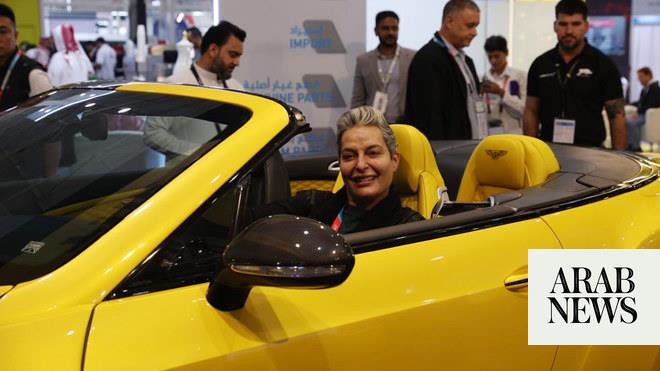
The women of Saudi Arabia won’t be the only ones celebrating the lifting of the driving ban by taking the wheel in big numbers.
The “teenage scribblers” — as one British politician famously described the cadre of analysts who deliver their verdicts on economic policy decisions — will also be reaching for their keyboards to assess what it means for gross domestic product (GDP), the industrial and services sectors, and the standard of living indices in the Kingdom.
So far, the effects have been regarded as almost wholly beneficial. In a nutshell, allowing women to drive will increase GDP significantly, boost the quantity and quality of the Saudi workforce, and enhance parts of the economy — like automotive production and sales, the insurance business, and the retail and medical sectors — that have been identified as crucial to the success of the Vision 2030 plan to diversify away from oil dependency.
Aside from the hard-headed calculations of economic benefit, the move will help transform the Saudi economy and everyday life, encouraging a more “normal” model that is inclusive and mobile. Female empowerment, as has been demonstrated around the world, is a key driver of economic transformation.
But first the hard facts. Allowing women to drive will potentially add millions of highly qualified and talented workers to the Saudi workforce. Currently, women account for only about 20 percent of the productive capacity of the Kingdom, a rate that is low even by the standards of other countries in the Gulf, where it stands at an average of about 42 percent.
Female empowerment, as has been demonstrated around the world, is a key driver of economic transformation.
Frank Kane
If the rate of female participation were to rise just to the Gulf average, it would add 2 million new workers to the labor force. These new recruits are, on the whole, better educated and qualified than their male colleagues in the Kingdom, so would be in high demand by employers, boosting productivity ratios significantly. There is a huge untapped reservoir of female talent out there.
It would also benefit GDP figures, directly adding as much as 0.5 percent per annum, according to some estimates. When the International Monetary Fund projects Saudi GDP at 1.7 percent for 2018, that is no mean contribution.
Furthermore, because women tend to work predominantly outside the energy sector, this will also boost the non-oil sector of the Saudi economy — the part economists look to for real growth and progress toward economic diversification.
There are some obvious winners. Car manufacturers and vendors are rubbing their hands in glee at the prospect of at least 3 million new drivers, many of them with significant disposable income. Dealers have reported brisk orders from last September onwards. The driving schools and insurance companies also stand to benefit directly from a surge in car ownership.
Of course, there are negative implications for the estimated 1.4 million mainly foreign drivers who until now have acted as chauffeurs for women and their families. But even here there is an economic silver lining: Their absence from the labor force will reduce remittances of currency from the Kingdom and improve the current account position. Cash sent abroad is estimated to account for 6 percent of GDP per year.
The ride-hailing companies will also see some of their traditional demand reduced, but both Uber and Careem expect substantial benefits both from increased economic activity and the new recruits to their workforce from the ranks of newly licensed women.
The consumer industries stand to benefit significantly. More women driving equals more trips to the malls and higher consumer spending levels, again boosting the non-oil sector. Some analysts have also forecast a further lift in the already booming medical sector: Women make up a large part of the workforce there, and making them more mobile will make for a more efficient health sector.
With greater female inclusion in the economy adding to the global perception of the Kingdom, women driving will also help in the drive to increase foreign direct investment, another key goal of Vision 2030.
Economists agree: Female empowerment is one of the main forces for economic growth in the world, but especially in emerging economies. So women behind the wheel will be driving not just themselves and their families, but also the economic transformation of Saudi Arabia.
Frank Kane is an award-winning business journalist based in Dubai. Twitter: @frankkanedubai
Disclaimer: Views expressed by writers in this section are their own and do not necessarily reflect Arab News" point-of-view












